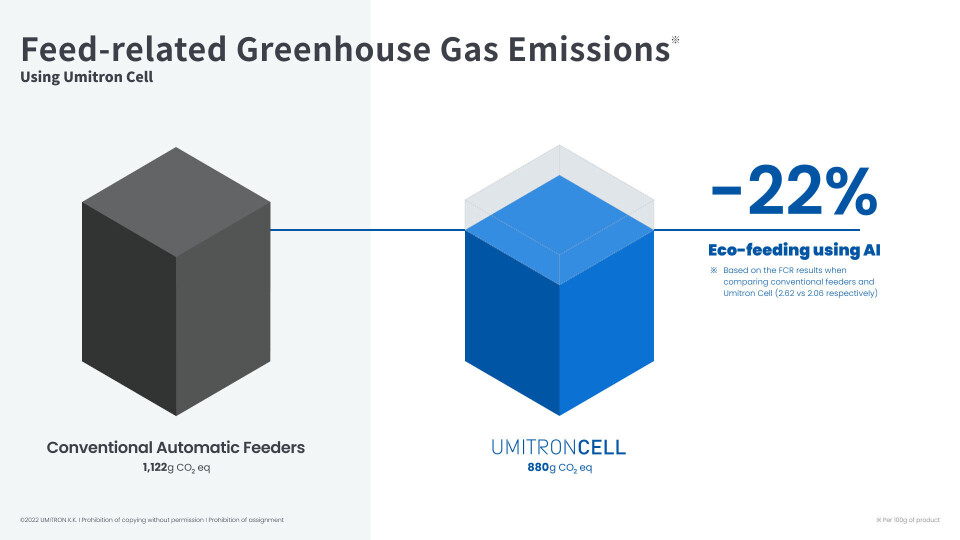
AI-powered feeder cuts emissions by a fifth
Fish farmers using an artificial intelligence-powered smart feeder from aquaculture technology developer Umitron reduced feed-related greenhouse gas (GHG) emissions for red sea bream by upwards of 20% when compared to conventional automatic feeders, the company said today.
Singapore and Japan-based Umitron recently assessed the environmental footprint of the Aquaculture Stewardship Council-certified bream, which are grown by farmers in a partnership with Umitron and sold online under the company’s Umi to Sachi sustainability brand.
The life cycle assessment (LCA) measured GHG emissions produced across the product’s value chain, from raw material procurement to end-use and disposal. GHG emissions of Umi to Sachi’s bream were approximately 1,048g CO₂ equivalent per 100 grams of product.
Raw materials
The analysis results also showed that procurement of raw materials, mainly for fish feed, accounted for more than 80% of the product’s total GHG emissions.
When compared against conventional automatic feeders, the Umitron Cell feeder was able to decrease GHG emissions by about 20% (240g CO₂ per 100g of product). Umitron said this is because it uses an AI-based Fish Appetite Index (FAI) to analyse fish behaviour during feeding and can minimise the amount of feed wastage in the water.
Faster growth
As well as consuming less feed, the fish also hit their targeted harvest size in just 10 months instead of one year.
“The positive results prove that we can still obtain reasonably sized, high-quality fish quickly while taking care of our marine resources by preventing unnecessary feed from being discharged into the environment,” said the company.
Umitron is planning to add more data on GHG reductions for products farmed using Umitron Cell.






















































